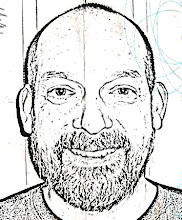I have long thought that efforts to control traffic on London streets have been over-engineered beyond effectiveness and actually make traffic flows worse rather than better. In fact, one can easily see that they do not work simply by observing the overwhelming congestion every day. The overuse of humps, chicanes, raised islands, lane narrowers and painted road markings has made traffic flow a nightmare. Perhaps it is intentional, but it is certainly mis-guided. Normally, I do not drive in London. I do not own a car but I do occasionally travel by bus and taxi. Besides, even I am smart enough to figure out that exhaust fumes increase dramatically when traffic stands still.
Normally, I do not drive in London. I do not own a car but I do occasionally travel by bus and taxi. Besides, even I am smart enough to figure out that exhaust fumes increase dramatically when traffic stands still.
The sheer volume of road markings and signs caught my attention one morning when I noticed a freshly re-paved road in Fulham Broadway. The work crews had just laid new asphalt the day before and the street remained refreshingly unadorned by lines, cross-hatching, arrows, bollards and other often unintelligible markings and structures. How nice it would be, I thought, if the street could remain like this, un-scarred by the blight of paint and superfluous steel and concrete.
It turns out I'm not the only one who thinks this. Dutch traffic engineer Hans Monderman, who died last month, had long advocated stripping roads of signs and markings and letting traffic, both vehicle and pedestrian, flow naturally. "If you treat road users like idiots, they act as idiots," he was quoted as saying. His theories proved successful in the Netherlands, and Kensington and Chelsea in London has also begun to embrace his ideas. Kensington High Street is better and safer since "safety" equipment like guardrails, white lines and signposts have been stripped out, although they still have a ways to go in the rest of the borough and cannot seem to put down the paint can.
His theories proved successful in the Netherlands, and Kensington and Chelsea in London has also begun to embrace his ideas. Kensington High Street is better and safer since "safety" equipment like guardrails, white lines and signposts have been stripped out, although they still have a ways to go in the rest of the borough and cannot seem to put down the paint can.
Monderman proposed that we manage traffice in ways consistent with other approaches to dealing with complex systems. You cannot control them, but you can achieve a desired outcome by allowing them to organise around "attractors." Complex, interactive systems prove remarkably adaptive and self-organising, and order truly does arise from chaos.
His ideas:
- Remove signs: The architecture of the road - not signs and signals - dictates traffic flow
- Install art: The height of the fountain indicates how congested the intersection is.
- Share the spotlight: Lights illuminate not only the roadbed, but also the pedestrian areas.
- Do it in the road: Cafe's extend to the edge of the street, further emphasizing the idea of shared space.
- See eye to eye: Right-of-way is negotiated by human interaction, rather than commonly ignored signs.
- Eliminate curbs: Instead of a raised curb, sidewalks are denoted by texture and colour
These ideas make great sense. Not only do they work, eliminating the unsightly clutter of paint and signs makes the streetscape more appealing. I can only hope that the people responsible for managing London's roads get the message. Are you listening Transport for London?










2 comments:
Great ideas, Parvenue. I wish you were in charge!
Yes, my poor man Monderman
-- killed whilst enjoying his morning constitution by a driver talking on his cell phone. Of all the luck.
Post a Comment